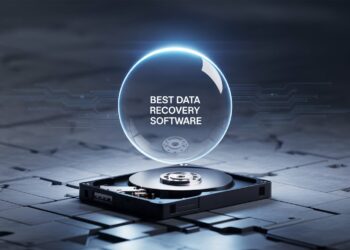Demand Sensing in Supply Chain – A Comprehensive Overview
Supply chains are dealing with uncertainty more than ever, and their success depends heavily on their prompt responsiveness to such uncertainties. Improving the visibility of the value network, enabling automated inventory traceability and tracking systems, and breaking the communication siloes are a few attempts toward keeping up with market volatility and shifting demand dynamics. Demand sensing as a software solution emerged as a go-to technology, enabling companies to achieve their objectives, thereby strengthening the network of suppliers and distributors and gaining a competitive edge regardless of disruptions.
Demand sensing has obliterated the legacy demand forecasting methods that faltered in their objective of informing companies and their supplier networks of plausible market disruptions before time. The pandemic was a grueling example. This tech-enabled intelligent forecasting method is definitely the key to supply chain success. Hence, keeping this in mind, it becomes imperative for companies to understand the concept.what is demand sensing’.
What is Demand Sensing?
Demand sensing is a software system powered by cutting-edge technology to help understand future demand for goods. It assists owners in predicting sales for the upcoming quarter or for a shorter duration by considering the previous quarter/day’s sales. This short-term prediction ability is essential for businesses to stay market ready all the time. Demand sensing technology continuously evaluates demand patterns, market changes, customer buying behaviors, product life cycles, internal promotions, competitor behaviors, and a horde of other external factors, including weather and seasonal patterns, to draw future predictions. Hence, the resultant outcome is nearly accurate, allowing businesses enough bandwidth to prepare and plan for inventories earlier.
How does Demand Sensing Work?
Forecasts from demand sensing brick the solid foundation to help companies understand which goods will sell, where, and when. Like the ancient demand forecasting methods, it also begins by considering historical data as a reference, but unlike the former, demand sensing draws information from other sources like the point of sales to determine sales and demand for a shorter duration. The main objective of demand sensing is to reduce the time between the occurrence of an event and its response, where historical data will not contribute enough. Micro and macro-economic factors, geo-political situations, and current economic meltdown are also considered because all of these elements will influence customers’ purchase decisions.
However, to reap the benefits of this modern technology, enterprises need to understand what demand sensing is and how it works. In simple words, demand sensing is an AI-powered software solution providing intelligent predictive analysis for companies to plan their upcoming demand for goods. It uses algorithms and deep learning to make accurate suggestions for improvements through cross-learning. Further, it uses internal and external data inputs to detect anomalies in demand patterns.
The key elements working behind this technology would be:
- Historical data
- Product and buyer history
- Upstream sell-in data
- Downstream sell-out data
- Financial data and analytics
- Internal trends
- External data
- Demand casuals
- Events and promotions
Demand Sensing Vs. Demand Forecasting – Key Points of Difference
It is highly possible to mistake demand forecasting for demand sensing. In order for owners to clearly understand what demand sensing is, a clear understanding of the differences is highly important.
To begin with, demand forecasting is the traditional method of predicting sales for companies by keeping the distant future in mind. This approach enabled anticipation of long-term trends based on the concept that trends usually repeat themselves. This was true until the global health crisis, which negated the usability of historical data in the face of extreme and unprecedented disruptions. Therefore, the importance of estimating short-term sales and demand dawned on enterprises and their supplier networks, compelling them to find more efficient tech-enabled predictive tools like demand sensing.
Demand sensing bases its analysis on numerous internal and external factors, and real-time data, market situations, and shifting customer demand are aptly predicted. As a result, it helps owners swiftly respond to sudden short-term changes, such as estimating changes in buying patterns following much-anticipated worldwide inflation.
Another critical difference is that the former offers a more proactive response to demand and managing supply chains. Contrarily, the latter allows owners to take a reactive approach to supply chain management.
That being said, combining both methods would provide a complementary solution helping businesses make more informed choices, formulate effective supply chain strategies, better anticipate customer behaviors, and stay responsive to any sudden or anticipated disruptions.
Therefore, demand sensing and demand forecasting together make for a perfect recipe, winning competitive advantage for businesses and ensuring success with their value networks.
Benefits of Demand Sensing
The answer to what demand sensing is reflects the ample benefits this technology brings to enterprise owners and their respective stakeholders. The following is a brief overview of the advantages:
- It boosts upstream planning
- It helps monitor inventory closely
- It strikes a balance between inventory and sales
- It addresses the latency issues
- It matches inventory with product lifecycles
- It enables easy handling of seasonal demand
- It elevates demand forecasting accuracy
- It creates a comprehensive roadmap for demand planning
- It ensures informed decisions regarding inventory and storage
- It supports owners with chasing a highest ROI
Evaluating the Role of Demand Sensing in Supply Chain Management
Supply chains and companies increasingly face challenges arising from shorter product lifecycles and volatile consumer demands. Adding to these woes are fragmented networks and siloes preventing data sharing about current market conditions at the supplier/distributor and consumer end. These factors culminate in longer shelf-life for products in warehouses or inventory stockouts. Increased lead time for products is an example of over-ordering. This results in wastage and overhead costs. Long-term demand forecasting often fails to arrest such anomalies in the value network. Even though this approach is still crucial for supply chain management, it doesn’t paint a realistic picture of current product demand. And manual inventory tracking and forecasting have become obsolete in the face of globalization, an intricate global network of vendors and distributors, and millions of SKUs. However, a significant setback occurred during the COVID-19 pandemic. The unprecedented challenges businesses face worldwide triggered the fast-paced adoption of intelligent digital solutions like AI and Automation. Demand sensing was one of them.
Demand sensing leverages data and cutting-edge technology to measure conditions and accurately calculate forecasts. Since this approach considers demand and supply variability, enterprises can effortlessly handle market fluctuations and their effects without ignoring their long-term objectives. In addition, demand Sensing has proven effective in managing inventory, such as accommodating replenishment of stocks as and when needed without the possibility of overstock or wastage. Hence, it is truly the key to improving the performance of supply chains. But, before one can take advantage of the good points, understanding what demand sensing truly is and how it works should be prioritized.
Conclusion
Market conditions are changing rapidly, and product lifecycles are decreasing in minutes. In the face of such volatility, there will need to be more efficient forecasting methods for enterprises to continue their business for a long. Hence, understand what demand sensing is and take advantage of its benefits to stay market ready and competitive all the time.





